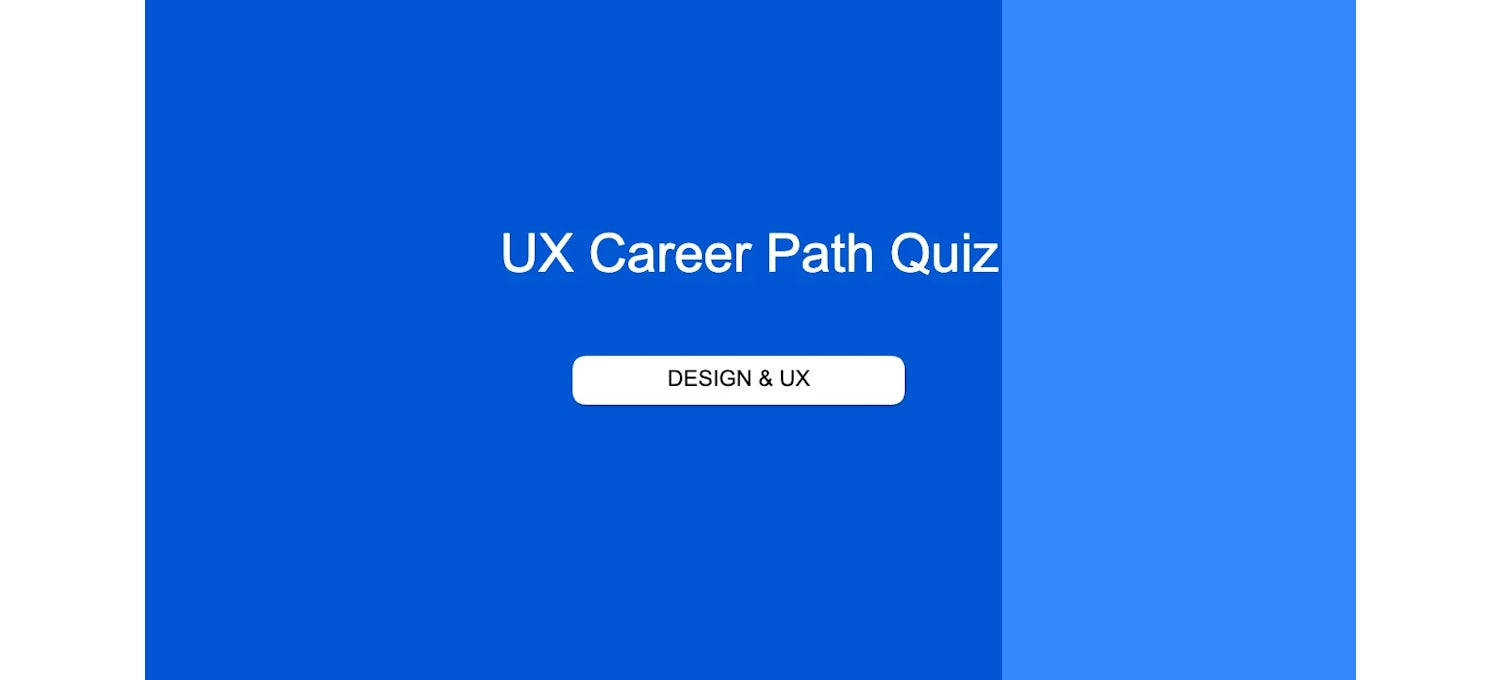UX Career Quiz: Is It Right for You? Find Your Role
Discover your ideal user experience career path with this career assessment quiz.

User experience (UX) design is a dynamic and rewarding field that focuses on improving the interactions between users and digital products. Whether you’re designing user-friendly websites, apps, or software, the goal is always to create intuitive, seamless experiences that delight users. However, with various roles within the UX field, it can be challenging to know which path is right for you. This quiz covers key career paths in UX, including UX research, UI design, interaction design, and usability analysis. By answering a few simple questions, you’ll receive personalized recommendations based on your responses.
Choose the answers that best reflect your natural interests, thinking style, and problem-solving approaches to discover your ideal path in the evolving landscape of user experience design.
Quiz Structure
10 multiple-choice questions
Takes approximately 5-10 minutes
Immediate results with career recommendations
Custom learning paths based on results
User Experience Career Quiz
Understanding Your UX Career Quiz Results
Your assessment evaluates four core UX domains: UX Research (UR), UI Design (UI), Interaction Design (IX), and UX Analytics (SA). Each role requires both primary expertise and complementary skills, as modern UX positions demand versatility and cross-domain knowledge.
Interpreting Your Progress Bar Display:
Green bars: Strong Alignment - Your responses indicate natural inclination and interest in this domain
Orange bars: Development Opportunity - You have a foundational interest, but may benefit from more exploration
UX Career Path Overviews & Learning Recommendations
UX Research Path (UR)
Focus: Understand user behaviors, needs, and motivations
Key skills: Qualitative research methods, User interviewing, Usability testing, Research synthesis, Behavioral psychology
Daily work: Conducting user interviews, Running usability studies, Creating research plans, Analyzing user feedback, Presenting research findings
Growth potential: UX Researcher → Senior UX Researcher → Research Lead → Head of User Research
Learning paths: Google UX Design Professional Certificate, User Experience Research and Design Specialization, Qualitative Research Methods, Interaction Design Specialization
UI Design Path (UI)
Focus: Create visually appealing and intuitive interfaces
Key skills: Visual design principles, Typography, Color theory, Design systems, Prototyping tools (Figma, Sketch)
Daily work: Creating UI mockups, Maintaining design systems, Visual design iteration, Collaborating with developers, Building component libraries
Growth potential: Junior UI Designer → Senior UI Designer → Lead Designer → Design Director
Learning paths: UI/UX Design Specialization, Design Fundamentals, Create High-Fidelity Designs and Prototypes in Figma
Interaction Design Path (IX)
Focus: Design how users interact with products and services
Key skills: User flows, Information architecture, Interaction patterns, Wireframing, Prototyping
Daily work: Creating user flows, Designing interactions, Building wireframes, Prototyping solutions, Documenting design decisions
Growth potential: Interaction Designer → Senior IxD → Lead Interaction Designer → Product Design Director
Learning paths: Interaction Design Specialization, Web Design: Strategy and Information Architecture, Human-Centered Design, Design Thinking Specialization
UX Analytics Path (SA)
Focus: Measure and optimize user experience through data
Key skills: Quantitative analysis, A/B testing, User behavior analytics, Data visualization, Statistical analysis
Daily work: Analyzing user metrics, Running A/B tests, Creating dashboards, Tracking KPIs, Making data-driven recommendations
Growth potential: UX Analyst → Senior Analytics Designer → Analytics Lead → Head of UX Analytics
Learning paths: Google Analytics Professional Certificate, Meta Data Analyst Professional Certificate, Quantitative Research, IBM Data Analysis and Visualization Specialization
Remember: The UX field values diverse perspectives and backgrounds. Your unique combination of interests and skills can bring valuable insights to any UX role you pursue.
Grow your UX career with ����vlog�����ۿ�
Whether you want to develop a new skill, get comfortable with an in-demand technology, or advance your abilities, keep growing with a ����vlog�����ۿ� Plus subscription. You’ll get access to over 10,000 flexible courses in AI, business, technology, and more.
More Quizzes to Explore
FAQs
UX professionals usually possess a combination of empathy, problem-solving ability, and creativity. They’re deeply curious about user behavior and excel at asking the right questions. Communication skills are key, as UX roles often require collaboration with developers, stakeholders, and other designers. Attention to detail, adaptability, and familiarity with UX tools like Figma, Sketch, or usability testing software also contribute to success.
The timeline to build a UX career depends on your starting point and learning approach. Some learners transition into UX within 3–6 months by completing intensive bootcamps or certificate programs and building a strong portfolio. Others may take closer to a year or more, especially if gaining experience through internships or part-time projects. With consistent effort, most professionals can move from beginner to intermediate levels in under two years, while senior roles typically require several years of hands-on experience across projects.
While all these roles exist under the broader UX umbrella, they serve different functions. UX Design focuses on creating smooth, intuitive user experiences through wireframes, prototypes, and usability flows. UI Design zeroes in on the visual aspects—like color palettes, typography, and layout—that make interfaces engaging and user-friendly. UX Research, on the other hand, is about understanding user behavior through interviews, surveys, and testing to guide design decisions. The quiz helps determine which area best fits your personality and skillset.
����vlog�����ۿ�
Writer
����vlog�����ۿ� is the global online learning platform that offers anyone, anywhere access to online course...
This content has been made available for informational purposes only. Learners are advised to conduct additional research to ensure that courses and other credentials pursued meet their personal, professional, and financial goals.
